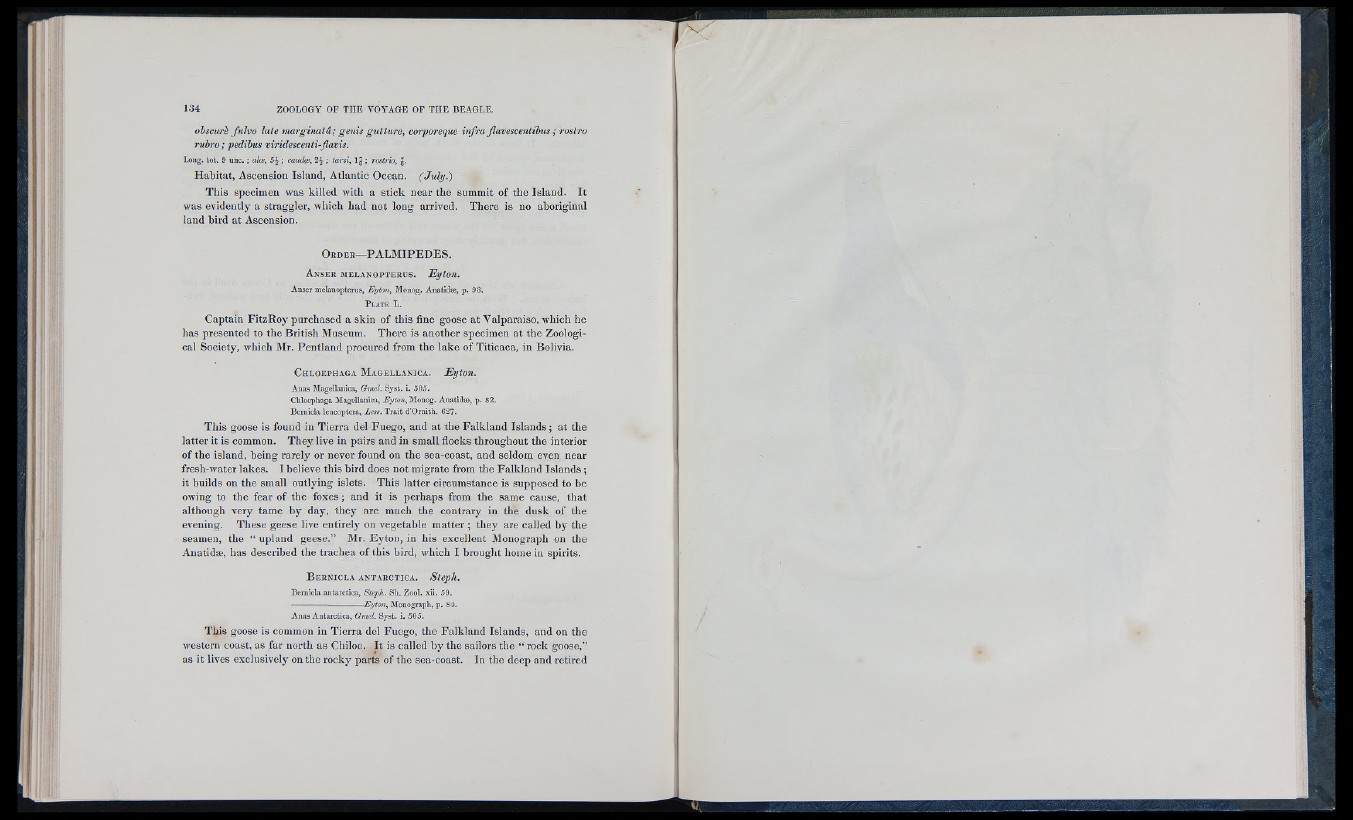
•.re, corporeque infra obscurè fulvo late marginatâ; ^ flavescentihus ; rostro
rubro ; pedibus viridescenti-flavis.
Long. tot. 9 unc. ; aloe, 54 ; caudæ, 2 \ ; tarsi, Ig ; rostrio,
Habitat, Ascension Island, Atlantic Ocean. (July.)
This specimen was killed with a stick near the summit of the Island. It
was evidently a straggler, which had not long arrived. There is no aboriginal
land bird at Ascension.
O r d e r — PALMIPEDES.
A n s e r m e l a n o p t e r u s . Eyton.
Anser melanopterus, Eyton, Monog. Anatidee, p. 93.
P l a t e L.
Captain FitzRoy purchased a skin of this fine goose at Valparaiso, which he
has presented to the British Museum. There is another specimen at the Zoological
Society, which Mr. Pentland procured from the lake of Titicaca, in Bolivia.
C h l o e p h a g a M a g e l l a n ic a . Eyton.
Anas Magellanica, Gmel. Syst. i. 505.
Chloephaga Magellanica, Eyton, Monog. Anatidte, p. 82.
Bernicia leucoptera. Less. Trait d’Ornith. 627.
This goose is found in Tierra del Fuego, and at the Falkland Islands; at the
latter it is common. They live in pairs and in small flocks throughout the interior
of the island, being rarely or never found on the sea-coast, and seldom even near
fresh-water lakes. I believe this bird does not migrate from the Falkland Islands;
it builds on the small outlying islets. This latter circumstance is supposed to be
owing to the fear of the fo x e s; and it is perhaps from the same cause, that
although very tame by day, they are much the contrary in the dusk of the
evening. These geese live entirely on vegetable matter ; they are called by the
seamen, the “ upland geese.” Mr. Eyton, in his excellent Monograph on the
Anatidse, has described the trachea of this bird, which I brought home in spirits.
B e r n i c l a ANTARCTICA. Steph.
Bemicla antárctica, Steph. Sh. Zool. xii. 59.
—Eyton, Monograph, p. 84.
Anas Antarctica, Gmel. Syst. i. 505.
This goose is common in Tierra del Fuego, the Falkland Islands, and on the
western coast, as far north as Chiloe. It is called by the sailors the “ rock goose,”
as it lives exclusively on the rocky parts of the sea-coast. In the deep and retired